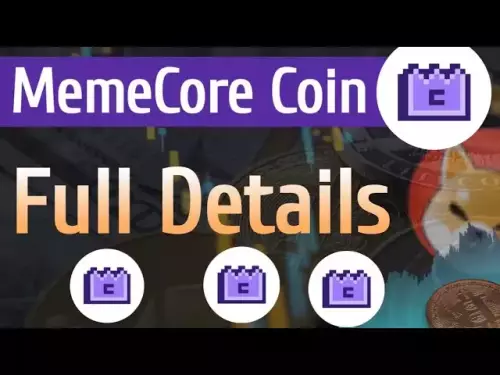-
 Bitcoin
Bitcoin $111100
0.71% -
 Ethereum
Ethereum $4298
0.48% -
 XRP
XRP $2.871
2.04% -
 Tether USDt
Tether USDt $0.0000
-0.03% -
 BNB
BNB $882.1
2.31% -
 Solana
Solana $206.1
2.72% -
 USDC
USDC $0.0000
0.03% -
 Dogecoin
Dogecoin $0.2271
5.03% -
 TRON
TRON $0.3306
5.37% -
 Cardano
Cardano $0.8324
1.53% -
 Hyperliquid
Hyperliquid $47.14
1.82% -
 Chainlink
Chainlink $22.37
0.43% -
 Ethena USDe
Ethena USDe $1.001
-0.02% -
 Sui
Sui $3.384
1.21% -
 Bitcoin Cash
Bitcoin Cash $603.7
1.48% -
 Stellar
Stellar $0.3596
0.61% -
 Avalanche
Avalanche $24.64
0.99% -
 Hedera
Hedera $0.2191
1.59% -
 Cronos
Cronos $0.2624
-1.85% -
 UNUS SED LEO
UNUS SED LEO $9.538
-0.40% -
 Litecoin
Litecoin $114.5
1.93% -
 Toncoin
Toncoin $3.093
0.82% -
 Shiba Inu
Shiba Inu $0.00001243
1.15% -
 Polkadot
Polkadot $3.986
4.13% -
 Uniswap
Uniswap $9.362
0.15% -
 World Liberty Financial
World Liberty Financial $0.2255
4.47% -
 Dai
Dai $0.9998
-0.01% -
 Ethena
Ethena $0.7402
0.63% -
 Monero
Monero $271.3
0.62% -
 Aave
Aave $300.7
0.53%
how to trade futures on binance for beginners
Binance Futures lets beginners trade crypto derivatives, but it's risky; losses can exceed investments. Learn leverage, margin, and risk management before placing your first trade using limit or market orders. Start with low leverage and utilize stop-loss orders.
Mar 20, 2025 at 05:14 pm
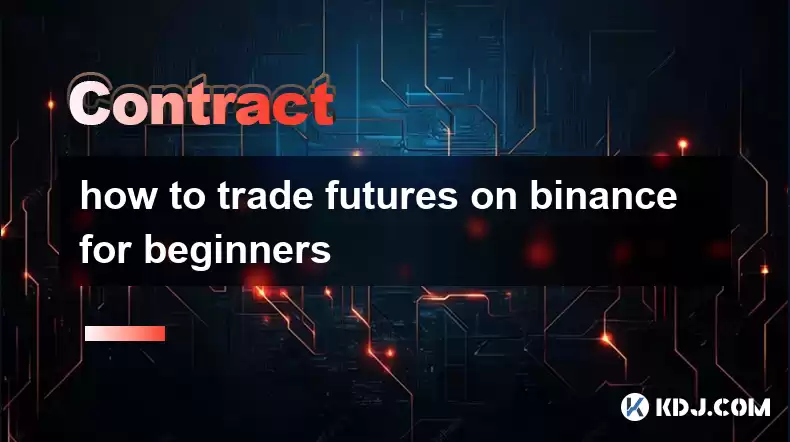
- Understanding Binance Futures: A brief overview of what Binance Futures is and its risks.
- Account Setup and Security: Steps to create a Binance Futures account and secure it.
- Understanding Leverage and Margin: Explaining leverage, margin calls, and liquidation.
- Placing Your First Trade: A step-by-step guide to executing a simple long or short trade.
- Managing Risk: Strategies for mitigating risk in futures trading.
- Advanced Strategies (briefly touched upon): A glimpse into more complex trading techniques.
Binance Futures offers a platform for trading cryptocurrency derivatives, allowing users to speculate on the price movements of cryptocurrencies without owning the underlying assets. However, it's crucial to understand that futures trading involves significant risk, and losses can exceed initial investments. Beginners should approach this market with caution and a thorough understanding of the mechanics.
Account Setup and Security:Before trading, you need a Binance account. If you don't have one, sign up on the official Binance website. Ensure you complete the KYC (Know Your Customer) verification process to access all features. Once logged in, navigate to the "Derivatives" or "Futures" section. Enable two-factor authentication (2FA) immediately for enhanced security. Consider using a strong, unique password and a hardware security key for maximum protection against unauthorized access. Never share your login credentials with anyone.
Understanding Leverage and Margin:Leverage amplifies both profits and losses. A 10x leverage means a 1% price movement results in a 10% change in your position's value. While leverage magnifies potential gains, it also increases the risk of liquidation. Liquidation occurs when your margin (the collateral you put up) is insufficient to cover potential losses. Margin calls are warnings that your margin is nearing the critical level, prompting you to add more funds or reduce your position size. Beginners should start with low leverage to gain experience and better manage risk.
Placing Your First Trade:Let's assume you want to place a long position (betting on a price increase) on Bitcoin.
- Choose a Trading Pair: Select the futures contract you wish to trade (e.g., BTCUSDT).
- Select Leverage: Choose a suitable leverage level (beginners should start with low leverage like 2x or 3x).
- Set Order Type: Start with a simple "Limit Order" to buy at a specific price or a "Market Order" to buy at the current market price.
- Enter Quantity: Specify the contract quantity you want to buy. Remember, this is multiplied by the leverage.
- Confirm Order: Double-check all details before confirming your order.
For a short position (betting on a price decrease), the process is similar, but you'll be selling contracts instead of buying them. Practice using the testnet (a simulated trading environment) before using real funds.
Managing Risk:Effective risk management is crucial in futures trading.
- Position Sizing: Never risk more than you can afford to lose on a single trade.
- Stop-Loss Orders: Set stop-loss orders to automatically close your position if the price moves against you, limiting potential losses.
- Take-Profit Orders: Set take-profit orders to automatically close your position when it reaches a predetermined profit target, securing your gains.
- Diversification: Don't put all your eggs in one basket. Diversify across different assets and strategies.
- Emotional Control: Avoid making impulsive decisions based on fear or greed. Stick to your trading plan.
More experienced traders might explore strategies like hedging, arbitrage, and grid trading. These strategies involve more complex order types and risk management techniques. Beginners should master the basics before attempting these advanced strategies. Thorough research and understanding are essential before implementing them.
Common Questions:Q: What are the fees on Binance Futures? Binance Futures charges maker and taker fees, which depend on your trading volume and BNB holdings. Check the Binance fee schedule for the most up-to-date information.
Q: Is Binance Futures regulated? Binance operates in various jurisdictions globally, and regulatory compliance varies depending on the location. It is your responsibility to understand the regulations applicable in your region.
Q: How can I learn more about futures trading? Binance offers educational resources, including articles, tutorials, and webinars. Additionally, numerous online resources and courses are available to enhance your understanding.
Q: What are the risks of futures trading? Futures trading involves significant risk. Losses can exceed your initial investment due to leverage. It is crucial to understand these risks before trading.
Q: Can I lose more money than I deposit? Yes, due to the use of leverage, your losses can exceed your initial margin. This is a key risk factor in futures trading. Careful risk management is essential.
Q: How do I withdraw my profits? Once you have closed profitable positions, you can withdraw your profits to your Binance spot wallet, then transfer to your linked bank account or other crypto wallets. Follow Binance's withdrawal procedures carefully.
Disclaimer:info@kdj.com
The information provided is not trading advice. kdj.com does not assume any responsibility for any investments made based on the information provided in this article. Cryptocurrencies are highly volatile and it is highly recommended that you invest with caution after thorough research!
If you believe that the content used on this website infringes your copyright, please contact us immediately (info@kdj.com) and we will delete it promptly.
- Bitcoin Core, Censorship Resistance, and Open Letters: A New York Minute on the Crypto Tug-of-War
- 2025-09-08 08:25:11
- Solana Price Soars: ETF Catalyst and Retail Flow Ignite SOL Rally
- 2025-09-08 06:25:13
- Bitcoin, Ethereum, and Token Performance: Can They Outpace FAANG?
- 2025-09-08 07:05:12
- Bitcoin Cash Soars as Ethereum Stumbles: A Crypto Market Rollercoaster
- 2025-09-08 07:25:14
- Hedera Hashgraph: Bullish Potential Brewing Amid Consolidation?
- 2025-09-08 07:10:12
- Crypto Investors Eye Layer Brett: The 'New Pepe' with Real Utility?
- 2025-09-08 07:30:12
Related knowledge
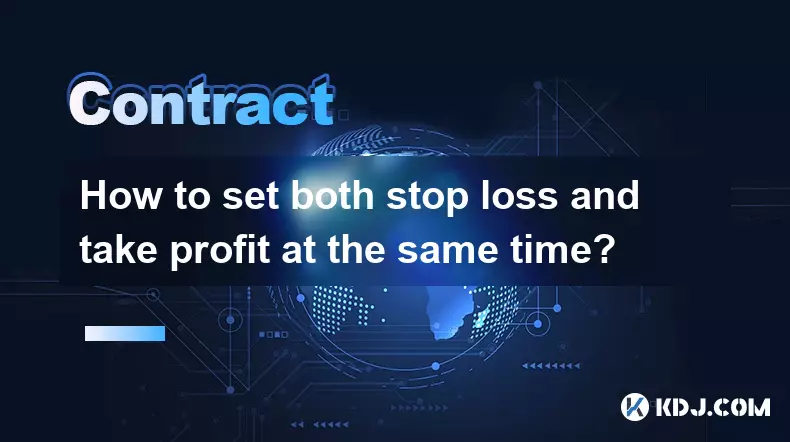
How to set both stop loss and take profit at the same time?
Sep 06,2025 at 04:36pm
Understanding Simultaneous Stop Loss and Take Profit Orders1. Placing both stop loss and take profit orders at the same time is a standard practice in...

What is copy trading for crypto futures?
Sep 07,2025 at 02:00am
What Is Copy Trading in Crypto Futures?1. Copy trading in crypto futures allows investors to automatically replicate the trades of experienced traders...
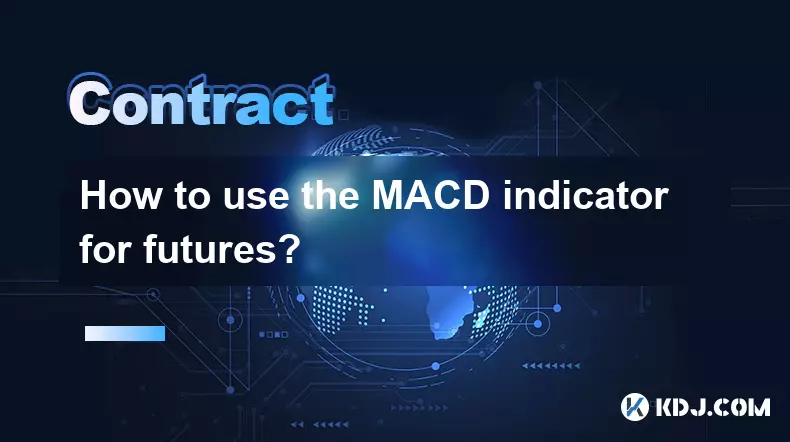
How to use the MACD indicator for futures?
Sep 07,2025 at 09:00pm
Understanding the MACD Indicator in Futures Trading1. The MACD (Moving Average Convergence Divergence) indicator is a momentum oscillator widely used ...

What to do if you are about to be liquidated?
Sep 06,2025 at 01:00am
Understanding Liquidation in the Crypto Market1. Liquidation occurs when a trader’s margin balance falls below the required maintenance margin, forcin...
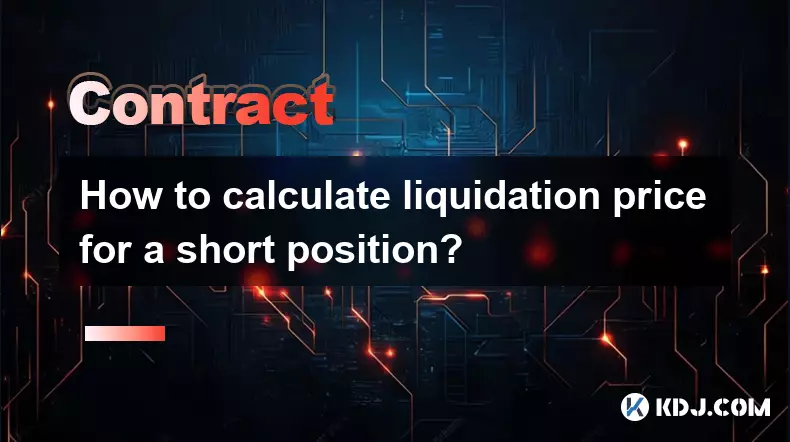
How to calculate liquidation price for a short position?
Sep 08,2025 at 03:54am
Understanding the Basics of Short Position Liquidation1. A short position in the cryptocurrency market involves borrowing an asset and selling it imme...
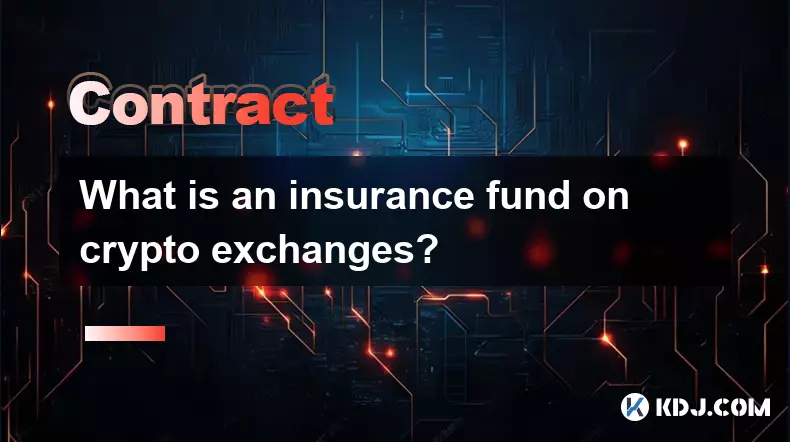
What is an insurance fund on crypto exchanges?
Sep 06,2025 at 03:36pm
Understanding the Role of Decentralized Exchanges in Modern Cryptocurrency Trading1. Decentralized exchanges (DEXs) have emerged as a cornerstone of t...

How to set both stop loss and take profit at the same time?
Sep 06,2025 at 04:36pm
Understanding Simultaneous Stop Loss and Take Profit Orders1. Placing both stop loss and take profit orders at the same time is a standard practice in...

What is copy trading for crypto futures?
Sep 07,2025 at 02:00am
What Is Copy Trading in Crypto Futures?1. Copy trading in crypto futures allows investors to automatically replicate the trades of experienced traders...

How to use the MACD indicator for futures?
Sep 07,2025 at 09:00pm
Understanding the MACD Indicator in Futures Trading1. The MACD (Moving Average Convergence Divergence) indicator is a momentum oscillator widely used ...

What to do if you are about to be liquidated?
Sep 06,2025 at 01:00am
Understanding Liquidation in the Crypto Market1. Liquidation occurs when a trader’s margin balance falls below the required maintenance margin, forcin...

How to calculate liquidation price for a short position?
Sep 08,2025 at 03:54am
Understanding the Basics of Short Position Liquidation1. A short position in the cryptocurrency market involves borrowing an asset and selling it imme...

What is an insurance fund on crypto exchanges?
Sep 06,2025 at 03:36pm
Understanding the Role of Decentralized Exchanges in Modern Cryptocurrency Trading1. Decentralized exchanges (DEXs) have emerged as a cornerstone of t...
See all articles





















